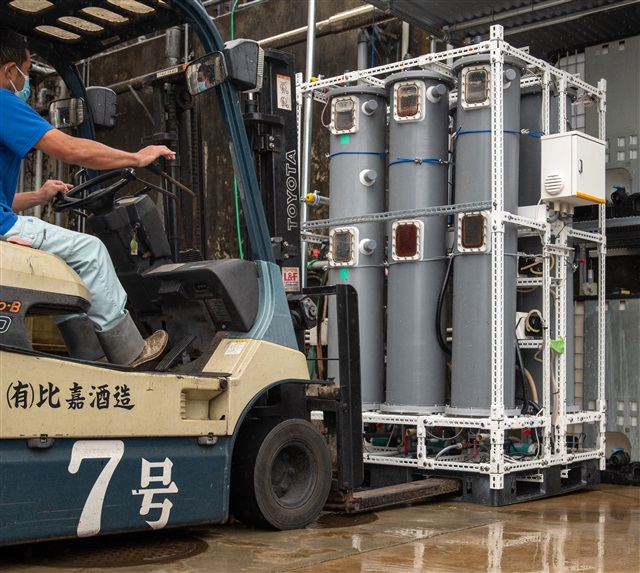Okinawa-based startup Watasumi is utilizing its biological technological expertise to convert organic carbon from waste water into energy through bioelectrochemical systems (BES). The company now targets small- and medium-sized food and drink industries around Japan, hoping to treat waste water more sustainably by leasing to clients the fully self-sustained compact module reactor that can also serve as an additional power source.
Watasumi is a spin-off from the Okinawa Institute of Science and Technology (OIST)'s R&D Cluster Section and the Tech Pioneers program. The company has advisors in Europe where Environmental Technology is more mature.
Company founder David Simpson has worked on such BES for over a decade. The technology works particularly well as the Japanese diet culture comprises a large variety of carbohydrates including rice and tofu, and Watasumi has attained business in the shochu and sake industry in Japan. Some other Watasumi's clients are also primary producers of food and beverages like tofu cakes and pig farms, which produce a consistent volume of waste water with high concentration of sugar that they normally would need to pay a large amount money to get treated and disposed of.
The system has a colony of bacteria consuming sugars on one conductive electrode, where some bacteria breathe electrons (oxidization) onto the electrode, and another type of bacteria consumes these captured electrons to boost biogas production in a "syntrophic" relationship. A counter electrode connected by an external circuit creates a power current and controls the reaction, Simpson explained. The reaction is fully self-sustained and produces biogas for use.
There are lots of small sake makers in Japan, Simpson added, and besides the primary producers, restaurants or local communities could be the potential clients to Watasumi in the future as well.
The benefits of Watasumi's solution
Watasumi is currently at the phase of streamlining production of the equipment. The business model works for its clients as it does not require a large capital to invest in. Neither does it require a lot of manpower to operate or monitor, Simpson said. Before the equipment gets in place, the company carries out analytical tests on the waste water.
Food producers are sometimes choked by the high costs of treating waste water, especially for small-scale one. Despite strict regulations for waste water treatment, compliance is not so high, especially with SMEs, according to Simpson. Biotechnology like BES's could help them lower the costs of waste water treatment and make their business more sustainable and environmental-friendly.
To push for its solution to be more widely adopted by the food and beverage industry, Watasumi is now making inroads to approach local authorities.
Currently, for small food producers considering adopting Watasumi's solution in Japan, Simpson said the costs can be mostly covered by government subsidies.
Most importantly, the reactor can help clients reduce a significant portion of energy costs as the biogas generated by the solution can be directed towards making new products. For distilleries, for example, 90% of the electricity generated by the reactor are in the form of biogas. Burning the gas for production activities or heating can save up to 50% of the energy requirement for the facility, Simpson said.
The company is looking to start seed-round fundraising this year.
Looking for collaborations and networking activities in neighboring Asia countries, the company will be in Taipei on Oct 12-14 as one of the recipients of the TIE Awards.

Watasumi's reactor system is easily installed on even the smallest of customer's sites by using standard pallets. This installation is capable of treating 1000L of distillery wastewater per day.
